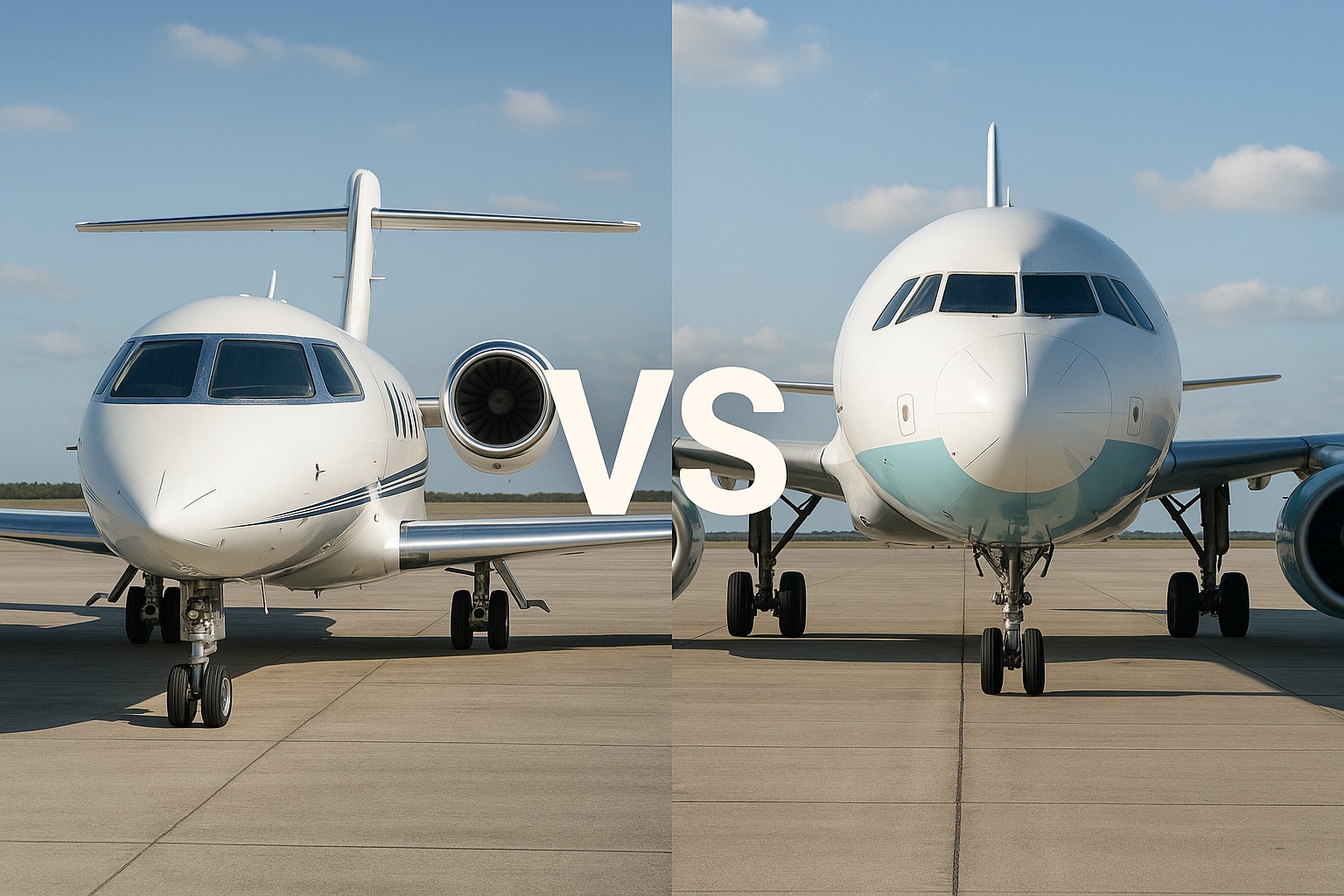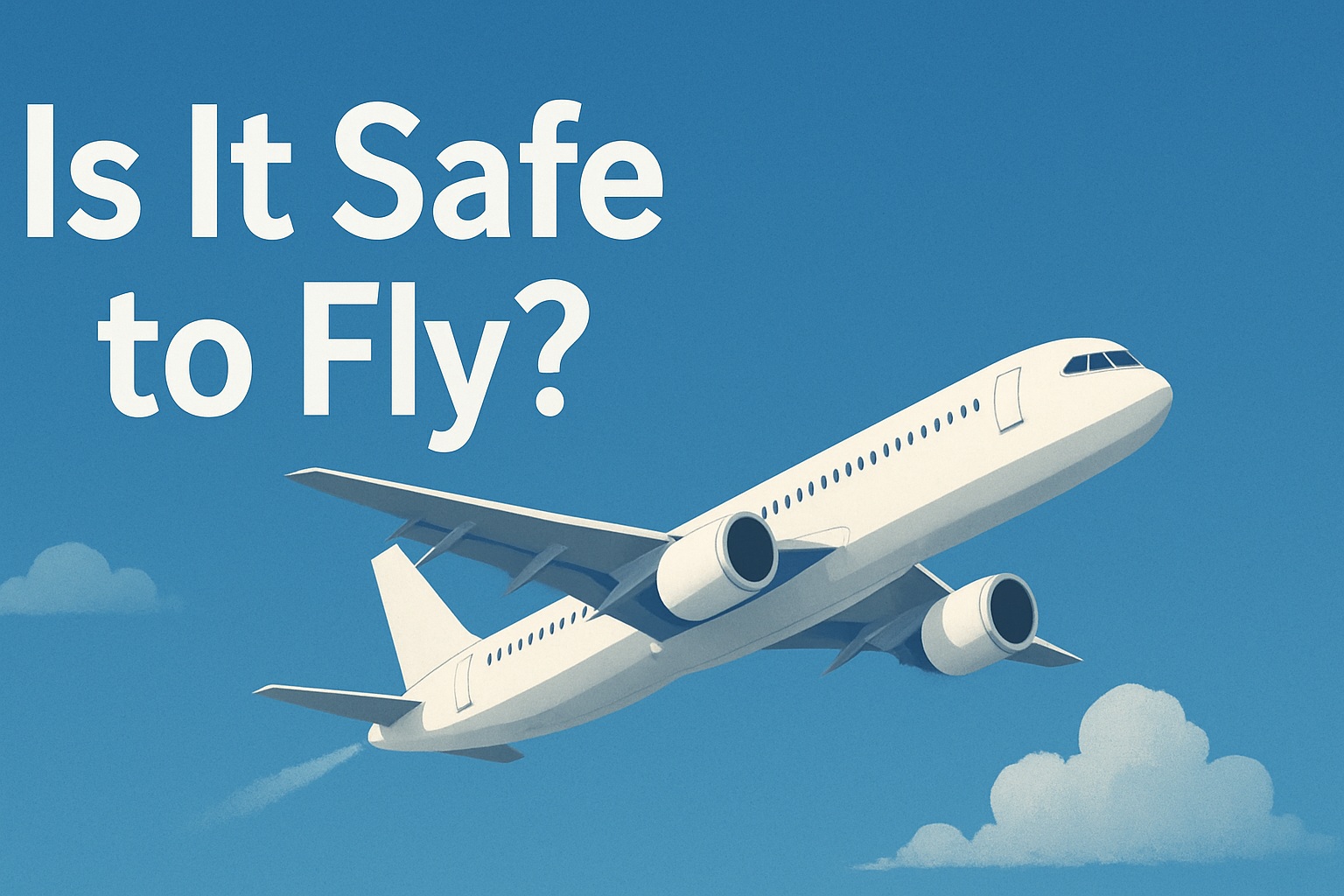If you’ve ever sat at the gate, glanced at the runway, and wondered, “Is it really safe to fly?”, you’re not alone. Fear of flying is one of the most common travel anxieties in the world. But here’s the good news: aviation is safer today than at any point in history.
So let’s cut through the myths, look at the facts, and answer the question once and for all.
Flying: Still the Safest Way to Travel
It might surprise you, but stepping onto a jet is statistically far safer than getting into your car. The numbers are staggering: millions of flights take off and land every year without incident. Your chances of being in a serious accident are less than 1 in several million flights.
Modern aircraft — think Airbus A350s, Boeing 787 Dreamliners, Gulfstreams, and Turboprop aircraft are designed with multiple backup systems, advanced sensors, and technology that monitors every detail mid-air. These jets aren’t just safe; they’re marvels of engineering.

Why We Still Worry
So if flying is so safe, why do our palms still sweat during turbulence?
- Turbulence: Feels dramatic, but planes are built to handle forces far stronger than any bump you’ll ever feel.
- Air Quality: Modern jets refresh cabin air every 2–3 minutes with hospital-grade HEPA filters. Ironically, you’re breathing cleaner air at 35,000 feet than in most office buildings.
- Mechanical Concerns: Every aircraft, whether commercial or private, is inspected and maintained under some of the strictest safety rules in the world.
- Media Coverage of Accidents: Aviation accidents dominate headlines when they occur. This disproportionate media attention makes risks feel larger than they are, reinforcing fear even when the odds remain microscopic.
- Human Psychology: Flying isn’t something our brains are naturally wired to accept. Humans evolved to walk, not to be ungrounded. Add to that the common fear of heights and the lack of personal control in the cockpit, and it’s easy to see why anxiety takes over despite the overwhelming safety record.
Flying feels risky because we’re not in control — but the data tells a very different story.

Private Jets vs. Commercial Airlines
Curious if private jets are “safer” than airlines? The truth: both follow the same rigorous safety standards.
- Airlines: Heavily regulated, with standardized training, scheduled inspections, and multiple crew members onboard.
- Private Flying: Smaller scale, includes Part 91 and Part 135, but just as strict. Pilots undergo recurrent training, aircraft are inspected constantly, and you often get the bonus of avoiding crowded airports.
The difference isn’t mainly safety — it’s experience. Some travelers prefer the flexibility and privacy of flying private, while others enjoy the efficiency of airlines.

Behind the Scenes of Aviation Safety
Flying is safe because it’s controlled by layers of protection:
- Global Oversight: Organizations like the FAA and EASA set strict worldwide standards while following ICAO standards.
- Pilot Training: Crews train in simulators for everything from lightning strikes to engine failures.
- Technology: Collision-avoidance systems, weather radar, and automated flight controls all reduce human error.
- Safety Management Systems (SMS): A structured, proactive framework that airlines, private operators, and maintenance providers must follow. SMS covers risk assessment, accident prevention, data monitoring, reporting culture, and continuous safety improvement, ensuring potential issues are identified and addressed long before they become hazards.
Every flight you board is the product of thousands of safety checks you’ll never see.
So, Is It Safe to Fly?
The short answer: yes. Flying remains the safest, fastest, and most efficient way to cover long distances.
Next time you hear that familiar question — “Is it safe to fly?” — you’ll know the truth: today’s aviation isn’t just safe, it’s extraordinary.


😍